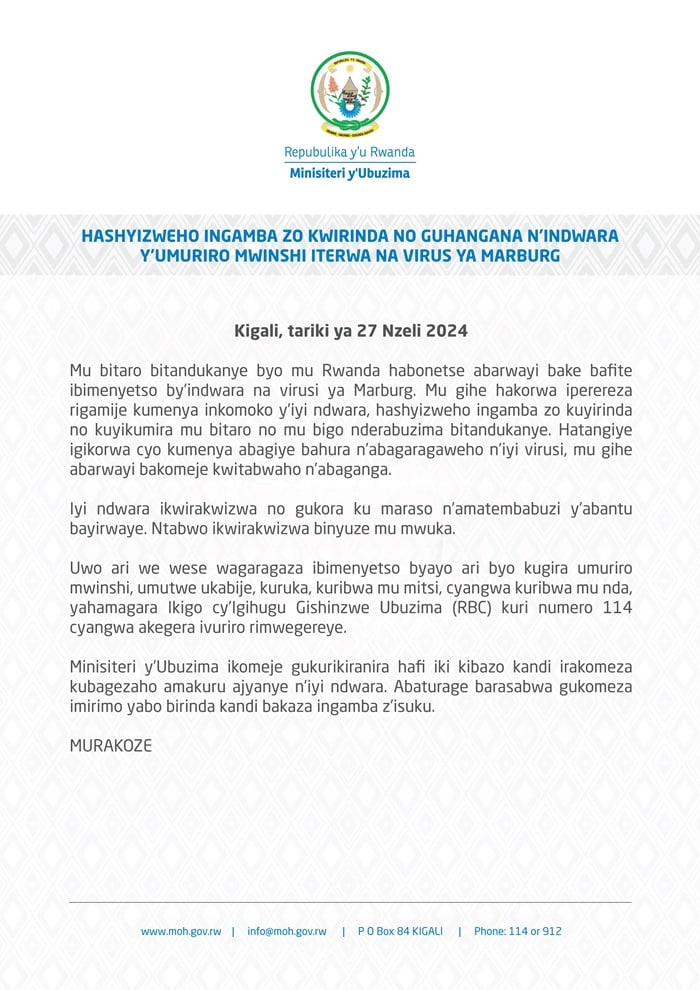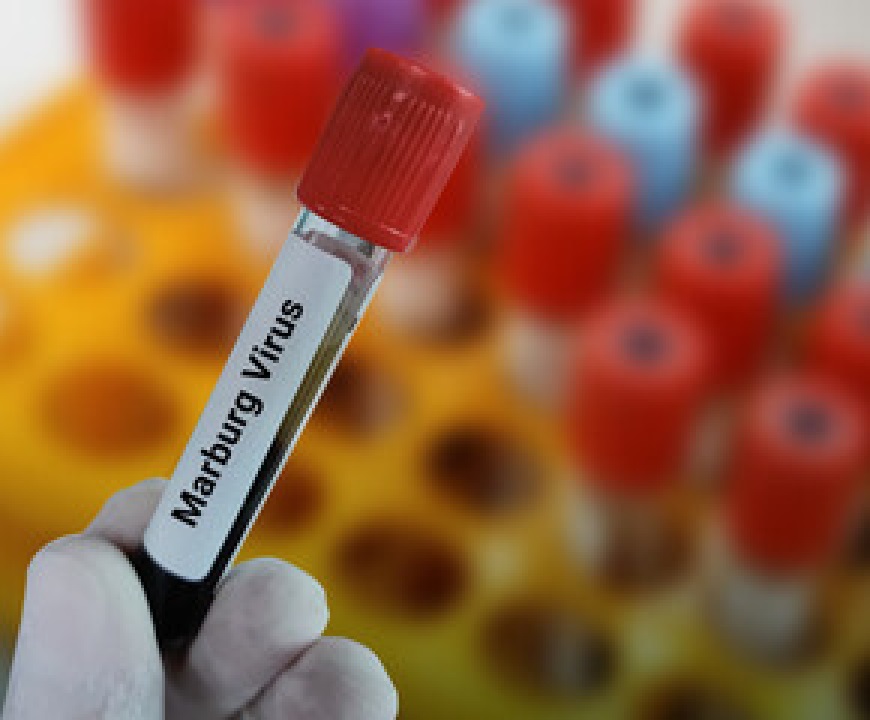Marburg virus disease (MVD), a severe form of viral hemorrhagic fever, has been confirmed in some patients in Rwanda and is caused by the Marburg virus. According to the World Health Organization (WHO), the disease can result in severe illness with a case fatality rate of up to 88%.
The United Nations health agency cautions that MVD can lead to severe viral hemorrhagic fever in humans. Symptoms often start suddenly and can rapidly worsen, causing serious health complications.
How marburg virus spreads
Humans are initially infected with the Marburg virus through extended exposure to mines or caves where Rousettus bat colonies reside. Once introduced into the human population, the virus primarily spreads via direct contact with the blood, secretions, organs, or other bodily fluids of infected individuals. Contaminated surfaces and materials, such as bedding and clothing, also present a transmission risk.
Healthcare workers are at heightened risk, often becoming infected through close contact with patients if proper infection control protocols are not followed. Burial practices involving direct contact with the deceased can further contribute to the virus’s spread. However, the virus is not transmitted through the air.
Signs and symptoms
The incubation period for MVD can range from two to 21 days, which means, symptoms can take some time to appear after exposure. Initial symptoms typically manifest suddenly and include, high fever, severe headache, muscle aches, and severe malaise.
On the third day, patients may begin experiencing severe watery diarrhea, abdominal pain, cramping, nausea, and vomiting. As the illness progresses, many patients develop severe hemorrhagic manifestations, including bleeding from multiple areas such as the nose, gums, and in vomitus or feces.
Patients at this phase may exhibit “ghost-like” features, characterised by deep-set eyes and extreme exhaustion. In fatal cases, hemorrhaging is common, emphasising the need for immediate medical attention for anyone displaying these symptoms.
What to do if you experience symptoms
Rwandans are urged to remain vigilant. If anyone experiences symptoms such as high fever, severe headaches, vomiting, muscle aches, or stomach aches, it is crucial to call the Rwanda Biomedical Centre (RBC) at 114 or visit the nearest health facility immediately. Early identification and isolation of cases are vital for effective treatment and containment of the virus, according to the ministry of health.
Diagnosis of marburg virus disease
Diagnosing MVD can be challenging due to the similarity of its symptoms with other infectious diseases such as malaria, typhoid fever, and other viral hemorrhagic fevers, according to WHO.
Confirmation of Marburg virus infection can be achieved through various diagnostic methods, including, antibody-capture enzyme-linked immunosorbent assay (ELISA), antigen-capture detection tests, reverse transcriptase polymerase chain reaction (RT-PCR) assay, virus isolation by cell culture.
Given the biohazard risk associated with samples collected from suspected cases, laboratory testing must be conducted under maximum biological containment conditions.
Treatment
Currently, there are no approved vaccines or antiviral treatments for MVD.
However, supportive care, including rehydration with oral or intravenous fluids and management of specific symptoms, can improve survival rates. Ongoing research is focusing on developing monoclonal antibodies and testing existing antivirals used for other viral infections.
Preventive measures and public awareness
To manage the outbreak, the Ministry of Health emphasizes the critical role of community involvement. Public awareness about Marburg virus disease and containment strategies is essential.
Key preventive measures include reducing the risk of bat-to-human transmission by avoiding caves or mines where fruit bats reside. If contact is necessary, wear protective clothing and gloves.
To prevent human-to-human transmission, avoid direct contact with infected individuals and their bodily fluids. Healthcare workers must follow strict infection control procedures.
Burial ceremonies should be conducted in a safe and dignified manner to prevent the transmission from deceased individuals.
Maintaining good hygiene practices, such as regular hand washing, is important, especially after visiting sick relatives or caring for infected individuals.
Addressing viral persistence and sexual transmission
The Marburg virus can remain in immune-privileged areas of the body, such as the testicles and eyes, even in individuals who have recovered from Marburg virus disease (MVD). In male survivors, sexual transmission is possible for up to seven weeks after recovery. The World Health Organization (WHO) advises male survivors to practice safe sex and maintain proper hygiene for 12 months after the onset of symptoms, or until their semen tests negative for the virus.
Survivors are encouraged to seek counseling on safe sexual practices and the importance of good hygiene to minimize the risk of transmitting the virus to their partners.



